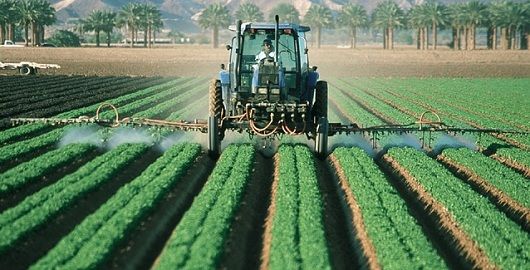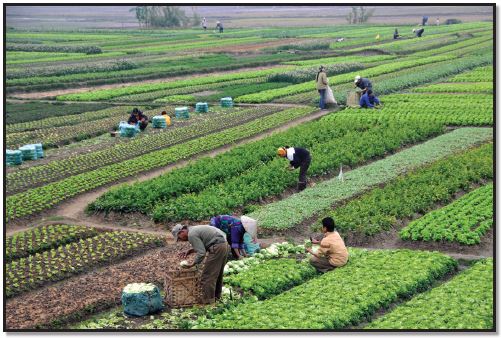Analyzing the Technical Advancements Changing Precision Farming Today
As the agricultural field grapples with the difficulties of feeding an expanding population and ensuring sustainability, technical developments are reshaping the landscape of precision farming. The complete effect of these advancements on traditional farming techniques and their long-lasting sustainability remains a subject ripe for exploration.
Drones in Farming

Drones help with accurate surveillance of huge farming areas, determining areas calling for focus, such as pest infestations or nutrient deficiencies. This targeted method enables the enhanced application of plant foods, chemicals, and water, lowering waste and environmental effect. Additionally, drones dramatically lower the moment and labor typically required for area assessments, increasing performance and reducing operational expenses.
Beyond data collection, drones contribute in accuracy growing and crop splashing, ensuring consistent circulation and reducing ground disturbance. The combination of drones into farming exhibits a change in the direction of data-driven farming techniques, where technology not just increases typical techniques however likewise introduces innovative services for future obstacles. As the agricultural market encounters pressures from climate change and population growth, drones present an encouraging opportunity for sustainable rise and source conservation.
Satellite Imagery Developments
While drones have dramatically improved accuracy farming through aerial data collection, satellite images proceeds to play a vital function in expanding the extent and range of agricultural surveillance. Satellite technology provides vast coverage, allowing farmers to gain access to critical understandings over comprehensive locations, which is not possible with drone technology alone. This is specifically useful for large-scale ranches that require detailed, regular information.
Developments in satellite imagery have actually brought around significant renovations in resolution and frequency of information capture. This prompt data is essential for making educated, real-time choices to optimize plant returns and source use.
In addition, the integration of hyperspectral and multispectral imagery has actually improved the data quality, enabling the accurate identification of plant types, development phases, and anxiety elements. With equipment discovering algorithms, farmers can translate satellite data much more efficiently, forecasting crop performance and prospective issues with extraordinary precision. These improvements are pivotal in improving lasting agricultural methods internationally.
IoT in Farming
The advent of the Internet of Points (IoT) in farming stands for a standard change in farming management methods, providing unparalleled connection and data-driven insights. As IoT gadgets multiply throughout farmland, they provide real-time monitoring and control over various farming processes. These clever tools, that include dirt sensing units, weather condition terminals, and livestock radar, gather and send information to central platforms, enabling farmers to make educated decisions and enhance resource use.
IoT innovation assists in accuracy farming by enhancing the accuracy of information accumulated from the field. For example, dirt dampness sensors can identify variations in moisture degrees, permitting specific watering organizing, which preserves water and advertises healthier plant development. Likewise, climate sensing units supply vital information on temperature level and humidity, helping in bug and disease management with prompt treatments.
Moreover, IoT-enabled equipment, such as autonomous tractors and drones, additionally streamline procedures by automating labor-intensive jobs and lowering human error. These innovations not only enhance performance yet also contribute to sustainability by minimizing inputs like water, fertilizers, and chemicals. As why not try this out IoT proceeds to develop, its assimilation into farming practices will likely deepen, driving productivity and sustainability in the agricultural sector.
AI-Driven Analytics
Structure upon the robust data collection abilities of IoT, synthetic intelligence (AI) emerges as a powerful device in transforming raw information into actionable understandings for precision farming. AI-driven analytics leverages device learning algorithms to examine large datasets gathered from sensors, drones, and satellites.

Furthermore, AI-driven analytics sustain accuracy farming by supplying tailored suggestions for growing timetables and irrigation monitoring. These insights help optimize water usage, straightening with sustainability goals. By providing real-time insights and strategic guidance, AI-driven analytics not just enhance functional efficiency but likewise contribute in the direction of sustainable farming practices, safeguarding food supply chains for the future.
Robotics and Automation
In the world of accuracy farming, robotics and automation are reinventing farming methods by supplying unprecedented efficiency and precision - commercial farming vs subsistence farming. These innovations are significantly being incorporated into numerous farming procedures, from planting and gathering to surveillance and upkeep. Automated discover here systems, such as robot farmers and autonomous tractors, allow for the optimization of labor-intensive tasks, lowering human error and labor prices. These machines are furnished with sensing units and GPS modern technology, enabling them to run with high accuracy and adjust to varying field problems.
Furthermore, robot systems enhance crop surveillance and management. Drones outfitted with imaging modern technology can evaluate huge areas promptly, giving real-time data on crop health and wellness and soil problems. This information is crucial for making educated choices relating to bug, fertilizing, and irrigation control, therefore enhancing return and resource effectiveness. Furthermore, robot weeders and planters raise the precision of these tasks, causing a lot more reliable use inputs.
The combination of robotics and automation in accuracy farming additionally addresses sustainability issues (commercial farming vs subsistence farming). By maximizing inputs and making the most of outcomes, these modern technologies aid reduce environmental influence. Robotics and automation not just change farming productivity but likewise add significantly to sustainable farming practices.
Conclusion
Technical developments are essentially improving accuracy farming by integrating sophisticated devices like drones, satellite imagery, IoT devices, AI-driven analytics, and robotics. Robotics further enhance procedures, leading to set you back decreases and boosted effectiveness, ultimately changing standard farming approaches.
Revolutionizing the farming landscape, drones have arised as an essential tool in accuracy farming.IoT innovation promotes precision farming by boosting the accuracy of information collected from the area.Building upon the durable data collection abilities of IoT, artificial knowledge (AI) arises as a powerful device in transforming raw information into actionable understandings for precision farming.In the realm of accuracy farming, robotics and automation are revolutionizing farming techniques by using extraordinary effectiveness and precision.Technological technologies are fundamentally improving accuracy blog farming by integrating sophisticated devices like drones, satellite imagery, IoT gadgets, AI-driven analytics, and robotics.